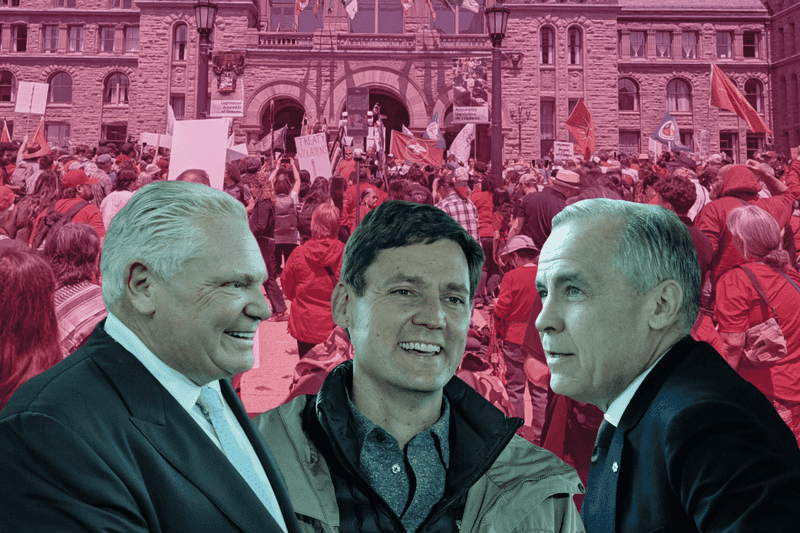We are living in a world of overlapping emergencies: climate change, the disintegration of the global order and the likelihood of renewed pandemics all imply that the recent years of major global shocks might well have been a test run for what is to come in the next years.
The recent inflation bout has been set off by shocks to essentials like food, fuel, semiconductors and shipping that have sent prices and profits in these sectors spiking. These cost shocks have been propagated across economies in what we have called sellers’ inflation: most firms protected or even increased their margins by hiking prices. As a result, inflation and global emergencies have been the best of times for the magnates of the corporate sector and those owning their shares.
Of course, shocks to essentials, inflation and perpetual emergencies are nothing new for many countries of the global South. When we talk about the “return of inflation after decades” in rich countries, we are really talking about our own domestic economies. When we are worried about food and energy price inflation in countries like the US and Germany, the global food and energy price shocks have meant a shooting up of hunger and energy poverty, a terms of trade shock and a deterioration of the exchange rate in many countries of the global South. When the US, and in its wake, Europe respond to inflation by hiking interest rates they aim to prevent wage catch up domestically but what most Global North commentators do not even bother to mention is that they exacerbate the debt crises, cause massive capital outflows and often trigger even more severe interest rate hikes in the South. This is why in my humble view, the struggle over how to fight inflation in rich countries is not just about the income of the working classes of the North and domestic macroeconomic outcomes but crucially also about the development prospects of the majority of countries and people. Those who now laude the US’s wonderful macroeconomic performance in managing inflation erase the experience of the majority of the people on the planet from their assessment.
Neoliberalism became hegemonic first as a new stabilization regime. Post-neoliberalism will require an alternative approach to stabilization as I am arguing in my forthcoming book “Essential”. All the laudable talk about green industrial policy in rich countries will not be worth much, if every inflation bout unleashed by shocks to essentials triggers massive interest rate hikes that undermine the ability of most countries to engage in climate mitigation and adaptation while pushing down investments even in rich countries that benefit from capital inflows. And these shocks to essentials are coming in our age of overlapping emergencies - even if we do not know precisely when, where, and how. There can be little doubt more mega shocks are on the way.
As we trace in a forthcoming paper that I am happy to share upon request, one of the core demands for a NIEO in the 1970s was the creation of international buffer stocks to stabilize the prices of essential commodities – that is commodities that are essential that the incomes of whole nations depend on, commodities that are essential for human livelihoods, and commodities that are essential for production. The case for such buffer stocks was rooted in a long history of an alternative stabilization paradigm going back to ancient Chinese statecraft, mobilized during the US New Deal, advocated in the Bretton Woods negotiations by Keynes and pushed to the forefront of the international agenda by structuralism and leaders of the Global South in the 60s and 70s. While countries of the Global North had benefitted from low commodity prices in the post-war era and had shown limited appetite for price stabilization at the international level, this situation changed with the early 1970s. Grain prices and then, thanks to OPECs oil embargo, energy prices spiked, contributing to inflation in the North. The credible threat of future commodity price spikes and of the formation of commodity-exporter cartels gave countries of the North an incentive to negotiate.
The buffer stock negotiations were about more than the prices of individual commodities – as important as they are. In a nutshell, this was about an alternative stabilization paradigm rooted in a global win-win case for growth and development. It started from the acknowledgement that commodity prices are inherently unstable – even in the absence of mega shocks. When commodity prices spike, they trigger inflation in industrial goods prices so that the terms of trade gains are not sustained for commodity producers. When commodity prices fall industrial prices do not fall or at least not to the same degree. At the same time if rich countries respond to inflation with interest rate hikes, commodity producers lose out twice. Meanwhile, the working class in the North is crushed and growth declines. This is the playbook of the Volcker Shock advocates of the NIEO sought to prevent with an alternative. Global commodity price stabilization is an alternative to this playbook, it is a crucial precondition both to enable growth and development and prevent inflation. It has the potential of a win-win case. Negotiations over buffer stocks had momentum until the logic of shock therapy won and neoliberalism brought debt crises and falling commodity prices.
On one level, this story of the 1970s resonates with the current inflation. There is again at least in theory scope for a win-win case. But there are also crucial differences:
In the 1970s, labor in the North was in a much stronger position to fend off the cost shocks than they are today. Today, capital has benefitted in unprecedented ways from the global cost shocks. To be sure, there is a lot of debate around whether labor benefitted in the US. I would argue that labor benefitted from the stimulus checks and the expansionary effects of fiscal stimulus, not from inflation. In the EU real wages have collapsed in unprecendented ways in many countries. In the 1970s, it took the Volcker Shock to crush labor. This time around capital won from the get-go. But this also means that one lesson for unions in the North should be that to prevent assaults on living standards from price explosions in essentials like food, energy and transportation requires a new emergency economics that aims to prevent these price explosions in the first place. Compared to the 1970s, the prospect of mega shocks seems much clearer today. So, while preparedness is always hard to fight for, there is a clear case, especially since in moments of shocks the right of the strongest rules with particular ruthlessness. Another key difference is that any attempt to deal with prices of essentials has to be integrated with climate adaptation and mitigation.
We have submitted a proposal for a global, multilayered buffer stock system to the Technical Committee. We use the example of food but this could be expanded to a range of essential commodities including critical minerals. This is a first attempt and we hope it sparks discussion. We hope to learn whether Global South delegates see this as a valuable avenue to pursue on the path to shaping the postneoliberal order and what you think about possible agency. I believe our proposal could be brought together with the calls for an alternative financial architecture. International buffer stocks of essential commodities have long been envisioned in conjunction with a currency issued against them.
Let me summarize some key points of our proposal:
The purpose of the multilayered buffers stock system is to stabilize international prices and markets for a select few commodities while creating room for national sovereignty in designing resilient provisioning systems. International buffer stocks of a few highly traded staple food commodities (e.g., rice, maize, wheat, vegetable oils) could be established at strategically sensible geographic locations and managed by the FAO or a UN body specifically created for this purpose. An intelligence unit within said body should be established and tasked with monitoring markets, estimating the necessary size of buffer stocks and designing and updating commodity-specific intervention strategies. A commercial arm could be charged with building up and releasing stocks in open market operation guided by the intelligence unit. Physical buffer stocks could be complemented by ‘virtual’ stocks designed to curb excessive speculation through futures market interventions. Buffer stocks could be financed by a mix of direct funding from member states supported by IMF lending (including a new issue of SDRs) and borrowing by the buffer stock agency. Since the commodities in storage represent a physical asset (like gold), central banks could cooperate on holding part of the buffer stocks as reserves and issue currency against it to ensure liquidity.
Buffer stock thinking is already back in rich countries. The US mobilized the strategic petroleum reserve in an unprecedented way. People in the vicinity of the Biden administration are arguing for a strategic resilience reserve. Mario Draghi called for a critical minerals buffer stock. I have been commissioned to write a report for the European Parliament on alternative forms of price stabilization. All European countries rich enough to buffer their economies against the energy price shock intervened against the best advice of neoliberals and against everything they have been preaching to countries of the Global South when they were dealing with mega shocks to essentials. China has the most sophisticated buffer stock system today that ever existing building on hundreds of years of history with this stabilization tool.
The question is not whether there will be a new stabilization paradigm. The question is whether this paradigm will be designed only in the name of national security for rich countries and the “West” or whether an international progressive alternative can stand a chance.




